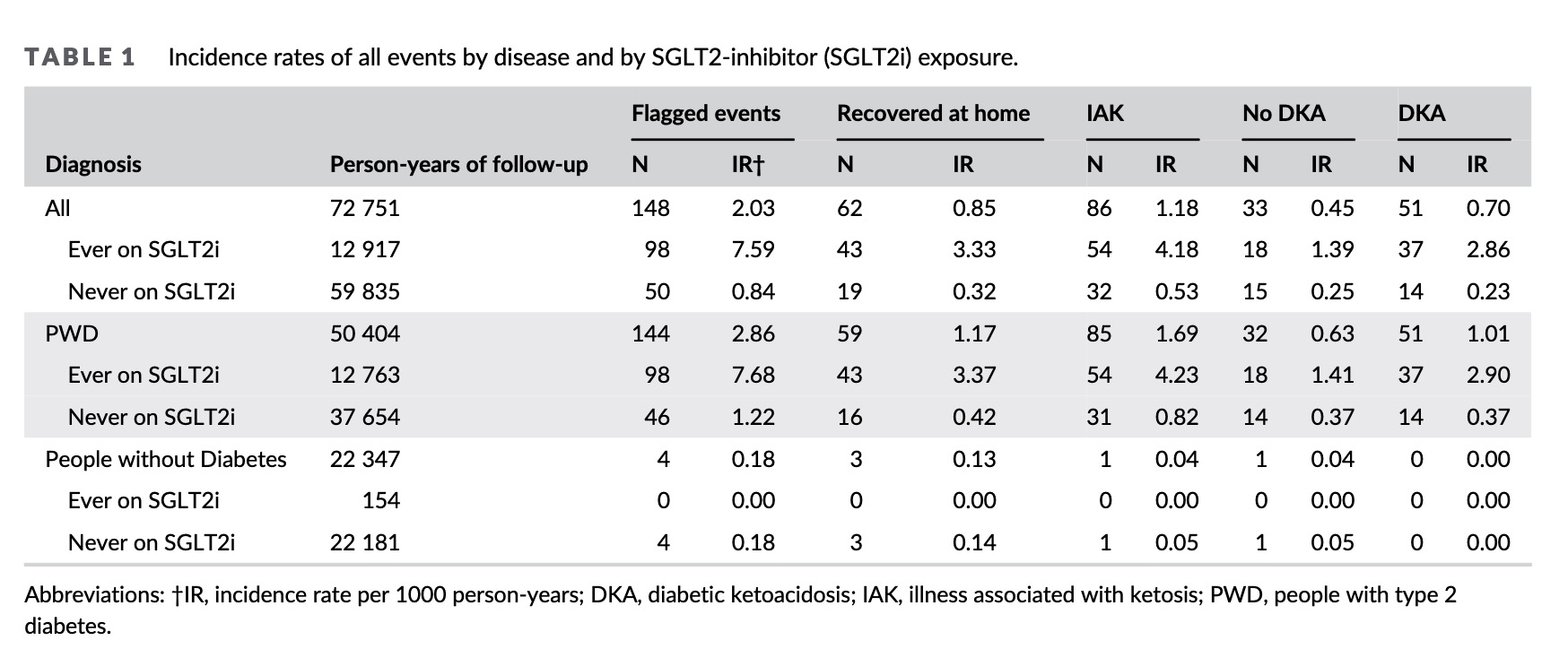TLDR - Ketogenic diets are very safe, People taking SGLT2 inhibitors will need to be more diligent about monitoring their ketone levels.
Abstract
Aims
Ketogenic diets are used by individuals with obesity and type 2 diabetes for improved glycaemic control, reduced appetite and weight loss. However, the risks associated with higher ketone levels, including diabetic ketoacidosis (DKA), in individuals with and without diabetes are not well-documented.
Materials and Methods
We analysed real world data from a single-centre telemedicine clinic specializing in a very low carbohydrate ketogenic diet (VLCKD) as a lifestyle intervention. Illnesses associated with ketosis (IAK) were defined as beta-hydroxybutyrate (BHB) levels ≥3 mmol/L when patients sought in-person care. We estimated the IAK and DKA incidence rate in individuals with and without type 2 diabetes.
Results
In 72 751 patient-years of follow-up, 86 people had IAK (incidence rate 1.18 per 1000 person-years). In 22 347 patient-years of follow-up of people without diabetes, the incidence rate of IAK was 0.04 per 1000 person-years with no DKA cases. In 50 404 patient-years of follow-up in people with type 2 diabetes (PWD), the incidence rates of IAK and of DKA were 1.69 and 1.01 per 1000 person-years, respectively. In 12 763 person-years of follow-up of PWD using SGLT2-inhibitors, the DKA incidence was 2.90 per 1000 patient-years.
Conclusions
Very low carbohydrate ketogenic diets are generally safe with low rates of IAK, including DKA, in people with and without type 2 diabetes. The higher incidence of DKA in PWD on VLCKD who are also on SGLT2-inhibitors may be manageable through at-home monitoring of BHB levels.
Full Paper from the Diabetes Obesity Metabolism Journal - https://dom-pubs.onlinelibrary.wiley.com/doi/full/10.1111/dom.16252

